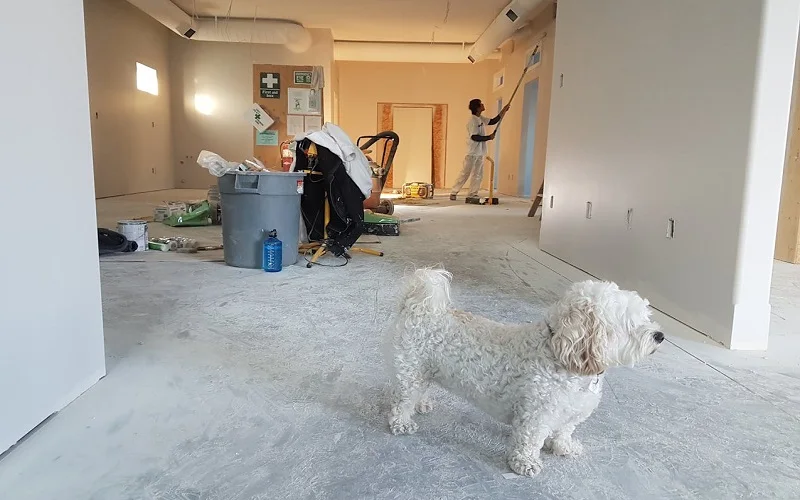What’s the one thing every homeowner in California learns fast? That the sun may be free, but home repairs never are. Whether it’s drought-proofing your yard or keeping your AC alive through record-breaking heatwaves, the to-do list never actually ends—it just rotates.
In this blog, we will share real-world ways to approach home upkeep and repairs with strategy instead of stress. If you have any suggestions, feel free to contact us.
Don’t Wait Until It Breaks to Care
Most people don’t think about their HVAC system until it wheezes to a stop in the middle of July. They don’t inspect their roof until a storm leaves water stains in the ceiling. And they only learn how their circuit breaker works when half the house goes dark during dinner.
The problem isn’t laziness. It’s triage thinking—managing the house the way you’d manage a hectic workday, where everything gets dealt with only when it becomes urgent. But homes aren’t designed to run like that. They’re ecosystems. And just like your health or your car, the systems inside them run better—and longer—when you pay attention before there’s an emergency.
Preventive maintenance isn’t glamorous. It’s filters changed on time. Gutters cleaned before fall. Smoke detectors tested even when nobody asked. That kind of discipline isn’t flashy, but it saves money and time. And it makes your house feel like a place you can count on instead of a surprise expense waiting to happen.
One area where this principle pays off fast is with heating and cooling. In climates where the weather doesn’t cut you much slack, you want a partner who doesn’t just respond to problems but helps prevent them. That’s where One Hour Heating & Air Conditioning® of Mission Viejo makes a difference. Known for punctual service, clear communication, and honest assessments, they approach HVAC like it actually affects your day-to-day life—because it does. Reliable service isn’t just about fixing what’s broken. It’s about knowing what’s likely to go next, and making sure you’re not left scrambling when it does.
Start Where the Problems Begin, Not Where They End
Every home has weak spots. Some are obvious—old pipes, leaky basements, electrical panels older than your car. Others creep in slowly, like air drafts that spike your utility bill or a loose step that becomes dangerous when someone’s rushing.
Instead of reacting to these one by one, step back and look at the bigger pattern. Are repairs stacking up in one part of the house? Are certain seasons tougher on your home than others? Is there a history of certain systems—plumbing, electrical, HVAC—that seem to wear down faster?
Track that. Write it down. You’re not just fixing issues. You’re learning your house’s habits. That knowledge helps you plan, budget, and even make smarter decisions about upgrades when the time comes.
Repairs and Renovations Aren’t the Same—and You Should Treat Them Differently
A repair is about restoring function. A renovation is about improving experience. Confusing the two leads to frustration and wasted cash.
If your water heater dies mid-winter, that’s a repair. It should be fast, efficient, and focused on getting things back to normal. But if your shower never has enough pressure and your utility bills are sky-high, then replacing the water heater might be part of a bigger renovation decision.
The key is to know when to stop at the fix and when to take a broader view. Repairs shouldn’t be used as a band-aid for something that needs real change. And renovations shouldn’t spiral because you treated every little fix like a design opportunity.
Avoid the DIY Trap When Stakes Are High
There’s a difference between painting your guest bedroom and rewiring your fuse box. A lot of homeowners learn that too late—usually after spending hours on YouTube and still calling a pro when the problem gets worse.
The logic behind DIY is usually cost-saving. But what it often forgets is time, tools, and skill level. What takes a professional an hour might take you a weekend—and still end up needing a correction. Worse, in some areas like HVAC, plumbing, and electrical, poor DIY work can be dangerous or violate code.
Save your energy for the projects where the margin of error is low. Let professionals handle the systems that make your home livable. You’re not failing by outsourcing. You’re investing in doing it once and doing it right.
Modern Problems Require Thoughtful (Not Trendy) Upgrades
The average American home was built decades ago for a completely different era. Smaller families. Fewer devices. Less extreme weather. Today’s conditions—remote work, rising energy costs, shifting climate patterns—demand more from every square foot.
That doesn’t mean you need to gut and rebuild. But it does mean thinking about upgrades that make your home more resilient. Things like smart thermostats that actually work with your lifestyle. Better insulation. Energy-efficient windows. Solar where it makes sense. Back-up battery systems if you’re in a blackout-prone area.
And yes, these upgrades come with upfront costs. But they also come with long-term returns—both financial and practical. You can wait for the market to force these changes on you, or you can do them on your terms.
Maintenance Isn’t Just Physical—It’s Administrative, Too
How often do you check your homeowner’s insurance policy? Do you know when your warranties expire? Can you locate your utility shutoffs in under a minute?
Homeownership includes a lot of hidden paperwork that only matters when you need it—and by then, it’s too late. Make time once a year to audit this side of things. Update your files. Label important switches and shutoffs. Review your insurance and compare rates if needed.
This may sound dry, but it’s the kind of thing that saves you when something goes wrong. Emergency repairs are already stressful. Don’t add logistical chaos on top.
You Don’t Need to Know Everything—You Just Need to Pay Attention
No one expects homeowners to be experts in roofing, HVAC, plumbing, and code compliance. What matters more is attentiveness. Notice when something changes. Don’t dismiss weird smells, new noises, or unusual bills. Ask questions early.
Your home isn’t trying to trick you. It’s communicating all the time. The more you listen, the less you’ll get caught off guard.
Upkeep is a mindset. It’s the quiet work that keeps the rest of your life running smoothly. Do it well, and your home doesn’t just stay standing—it becomes something that supports you back.




